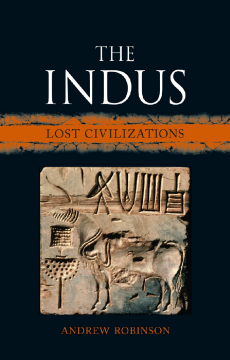
Additional Information
Book Details
Abstract
When Alexander the Great invaded the Indus Valley in the fourth century BCE, he was completely unaware that it had once been the center of a civilization that could have challenged ancient Egypt and neighboring Mesopotamia in size and sophistication. In this accessible introduction, Andrew Robinson tells the story—so far as we know it—of this enigmatic people, who lay forgotten for around 4,000 years.
Going back to 2600 BCE, Robinson investigates a civilization that flourished over half a millennium, until 1900 BCE, when it mysteriously declined and eventually vanished. Only in the 1920s, did British and Indian archaeologists in search of Alexander stumble upon the ruins of a civilization in what is now northwest India and eastern Pakistan. Robinson surveys a network of settlements—more than 1,000—that covered over 800,000 square kilometers. He examines the technically advanced features of some of the civilization’s ancient cities, such as Harappa and Mohenjo-daro, where archaeologists have found finely crafted gemstone jewelry, an exquisite part-pictographic writing system (still requiring decipherment), apparently Hindu symbolism, plumbing systems that would not be bettered until the Roman empire, and street planning worthy of our modern world. He also notes what is missing: any evidence of warfare, notwithstanding an adventurous maritime trade between the Indus cities and Mesopotamia via the Persian Gulf.
A fascinating look at a tantalizingly “lost” civilization, this book is a testament to its artistic excellence, technological progress, economic vigor, and social tolerance, not to mention the Indus legacy to modern South Asia and the wider world.
“Robinson creates a brilliant portrait of one of the world’s most enigmatic early civilizations. In doing so, he crosses the boundaries between different academic disciplines with effortless panache and high learning. This succinct account of the Indus civilization, its script, religious beliefs, and its complex inheritance, places a vigorous, urban society in its rightful historical context. Everyone interested in ancient civilizations should read this eloquent, closely argued biography (it is nothing less) that brings the Indus people in from the historical shadows.”
— Brian Fagan, author of The Great Warming and Elixir: A History of Water and Humankind.
“Wonderfully eloquent and informative new book. . . . Robinson examines by chapter every aspect of this deliciously intriguing civilisation, from religion, society, art, trade, and agriculture, to their origins, disappearance, and rediscovery . . . a comprehensive account of the Indus people, condensed into a highly accessible volume—and a very good read indeed.”
— Current World Archaeology
“Robinson does an excellent job of condensing key Indus issues to their core, framing them in terms accessible to the intelligent enthusiast and archaeologist alike. Robinson is a superb writer. With numerous other books on ancient civilizations to his credit, he knows how to make things interesting without going into numbing detail, always keeping the narrative thread alive . . . well-illustrated and highly recommended.”
— Omar Khan, Harrapa
“The Indus is very well written and eminently readable. . . . Robinson deals with all the unsolved problems in a fair manner and with balanced judgement . . . a valuable contribution to the literature on the Indus civilization.”
— Iravatham Mahadevan, Indus epigraphy expert
“A very well-written, well-illustrated popular account of the Indus civilization. . . . This new work is an important addition to the literature because of the author’s extensive knowledge of the subject, his use of the most recent sources, and his succinct but engaging style.”
— Choice
“A brief but excellent introduction to the Indus Civilization.”
— Indian Historical Review
Andrew Robinson is the author of many books, including Earthquake, also published by Reaktion Books. A fellow of the Royal Asiatic Society, his writing appears in publications such as the Lancet, Nature, and New Scientist.
